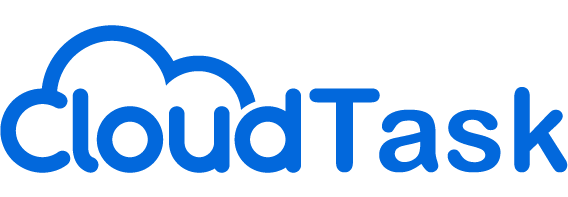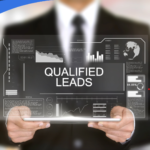Major corporations are leading a significant transformation in sales strategies, embracing distributed sales teams as a cornerstone of their business model.
This shift towards digital prowess in sales is not just a fleeting trend; it has become an essential adaptation for enduring success.
Particularly in B2B RevOps and sales, where customer interaction and sales methodologies are in constant flux, the adoption of remote sales strategies is crucial.
This guide offers an in-depth exploration of integrating remote sales within traditional sales frameworks.
Here, we aim to demystify the transition to remote sales, providing a comprehensive overview of the best practices, cutting-edge tools, and effective strategies essential for navigating this change.
We will examine how leading companies are leveraging remote sales to their advantage, understanding their strategies, and drawing actionable insights.
By incorporating the latest market research and real-world case studies, this guide is an invaluable resource for sales leaders, managers, and practitioners aspiring to excel in the digitized sales environment.
Our journey will cover crucial aspects, such as building and managing distributed sales teams, using technology to enhance remote sales processes, and developing remote sales tactics that resonate with today’s customers.
Moreover, we will discuss the challenges and opportunities of remote selling, offering solutions to common hurdles and strategies to capitalize on the unique benefits it offers.
As we delve into these topics, this guide will equip you with the knowledge and tools necessary to seamlessly integrate remote sales into your business strategy, ensuring that your sales teams are not just prepared but thrive in the modern digital sales landscape.
Get ready to transform your sales approach and tap into the potential of virtual selling in today’s globally connected marketplace.
Understanding Remote Sales

Defining Remote Sales
Remote sales, often referred to as virtual sales or remote selling, involves engaging with potential customers and closing deals without in-person meetings.
This approach leverages digital communication channels like phone calls, emails, video conferencing, and social media to interact with clients.
Remote sales professionals must adapt their selling tactics and strategies to suit a digital environment, focusing on building trust, understanding customer needs, and effectively presenting solutions through virtual means.
The Rise of Online Sales Engagement
The trend towards telework, accelerated by the global pandemic, has catalyzed a remarkable shift in sales strategies across industries. Remote selling, once a niche approach, is now at the forefront of modern business practices. The statistics and real-world examples bear testament to this transformative movement.
Proliferation of Virtual Selling: The Numbers
Increased Adoption – A study by McKinsey & Company revealed that B2B companies see digital interactions as two to three times more important to their customers than traditional sales interactions.
Cost Efficiency – Forbes notes that companies can save an average of $11,000 per year for every employee who works remotely half of the time. This saving is partly attributed to the reduced need for office space and resources.
Expanded Talent Pool – According to a report by Global Workplace Analytics, 74% of professionals expect telework to become standard, indicating a future where businesses can access a wider talent pool not limited by geographical constraints.
Success Stories in Remote Selling
Salesforce’s Digital Pivot – As a leading CRM provider, Salesforce rapidly adapted to virtual selling. They transformed their sales strategy to be completely digital, using their platform to manage customer relationships and sales pipelines effectively. This shift not only maintained their sales momentum but also set a benchmark for CRM-driven remote sales models.
IBM’s Transition to Virtual Sales – IBM, a multinational technology company, shifted to a remote sales model that leverages advanced analytics and AI to identify customer needs and tailor their sales approach. This shift resulted in more personalized customer interactions and efficient sales processes.
Zoom’s Role in Facilitating Remote Sales – The video conferencing tool Zoom became instrumental in remote selling during the pandemic. Not only did Zoom see a dramatic increase in its own sales and stock price, but it also became a critical tool for sales teams worldwide to connect with clients and conduct virtual meetings and product demos.
The Future Trajectory
The trajectory of virtual selling points towards continued growth and evolution.
Gartner predicts that by 2025, 80% of B2B sales interactions between suppliers and buyers will occur in digital channels.
The future of sales lies in harnessing digital tools, data analytics, and virtual engagement strategies to create a seamless and efficient remote sales strategy.
In conclusion, the rise of remote selling is more than just a reaction to global circumstances; it’s a strategic evolution that is reshaping the landscape of sales.
Companies that embrace this change are positioning themselves for sustainability and success in a digital-first marketplace.
Integrating Remote Sales into Your Strategy

Assessing Your Current Process
Before integrating remote sales, it’s crucial to understand your current selling process thoroughly. Analyze each stage of your selling process, from lead generation to closing deals, and identify areas where remote selling techniques can be incorporated or enhanced.
Building a distributed Sales Team
Hiring and Training
When building a remote sales team, focus on hiring professionals with strong communication skills, self-discipline, and familiarity with digital tools. Training should cover virtual selling techniques, effective communication, and the use of CRM and other sales software.
Remote Sales Management
Integrating remote sales into your current business strategy requires a thoughtful approach, considering several critical elements that have been highlighted by recent trends and studies in B2B sales.
Embracing Digital Tools and Data-Driven Strategies
Technology plays a pivotal role in enhancing the customer experience in remote sales. Utilizing tools like CRM systems and digital sales rooms is crucial for personalized communication and understanding customer needs.
A study by McKinsey found that companies using data-driven sales processes are significantly more profitable and efficient than their competitors.
By integrating AI and machine learning, businesses can analyze large datasets for insights that inform sales and marketing strategies, leading to a more efficient sales strategy.
Social Selling and Leveraging LinkedIn
Platforms like LinkedIn have become vital for B2B sales, with a significant percentage of B2B buyers preferring to work with companies recommended by their professional network.
Sharing valuable content, engaging with the target audience, and building relationships with key decision-makers are effective strategies for social selling.
The Shift to Virtual Selling and Virtual Sales Teams
The pandemic has accelerated the shift to virtual selling. By 2025, a significant portion of B2B sales interactions between suppliers and buyers is expected to occur in digital channels, according to Gartner.
This shift offers benefits like cost savings, increased efficiency, and access to a wider talent pool. Businesses should invest in the right tools and establish clear communication and collaboration processes to excel in virtual sales.
Content Marketing and Thought Leadership
High-quality content is crucial for B2B sales success. Businesses that create and distribute valuable content can establish themselves as industry thought leaders and build trust with potential clients.
For instance, HubSpot’s extensive library of resources demonstrates its expertise in inbound marketing and helps attract and nurture leads.
Sales Enablement and Training

Sales enablement is critical in B2B sales, ensuring that sales teams have the right tools, resources, and training to effectively engage with prospects and close deals.
Continuous learning and skill development, focusing on both hard skills like product knowledge and negotiation, and soft skills like empathy and communication, are crucial for sales reps in the digital age.
In conclusion, the future of B2B sales will be shaped by customer experience, data-driven decision-making, social selling, remote selling, content marketing, and sales enablement.
By adapting to these trends and staying informed about industry developments, businesses can position themselves for success
in a dynamic and competitive marketplace.
Key Takeaways and Strategic Recommendations
Integrating remote selling into your strategy is not just about replicating your in-person tactics in a digital format. It requires a strategic rethinking of how you engage with customers and manage your sales team.
Focus on Strategic Advantages – For manufacturers of B2B industrial goods, it’s crucial to prioritize strategic advantages in key market segments and innovative offerings. This involves continuously revising the sales organization to align with market dynamics and ensure profitable growth.
Adopting a Data-Driven Approach – Embracing data analytics in your sales strategy can significantly improve profitability and efficiency. Tools like AI and machine learning can analyze customer data to provide insights for a more targeted and efficient sales process. For instance, using AI-powered tools like Vainu can help prioritize leads, making your sales strategy more efficient.
Harnessing the Power of Social Selling – Platforms like LinkedIn have become indispensable in B2B sales. Sharing valuable content and engaging with your target audience on these platforms can be a highly effective strategy. Adobe’s #MakeItAnExperience campaign on LinkedIn is a successful example of this approach.
Embracing Omnichannel Selling – The trend is shifting from mobile-first to a more seamless omnichannel sales model. A study by McKinsey found that B2B customers use ten or more channels to interact with suppliers, highlighting the need for an integrated sales approach across multiple channels.
Implementing Agile and Collaborative Sales Processes – Remote selling structures allow for greater planning flexibility, with successful B2Bs updating account priorities and realigning resources frequently. This flexible planning is particularly effective for companies selling solutions, as it enables collaboration with specialists from across the business to design best-fit offerings for customers.
Enhancing Customer Experience with Technology – Leveraging technology to enhance customer experience is crucial. Tools like StoryXpress can create personalized video content, making your brand stand out in a crowded market.
Sales Enablement and Continuous Learning – Organizations with a sales enablement function have been found to have a higher win rate. Continuous learning and embracing new sales tools and technologies are essential for staying competitive in the digital age.
Adopting a Data-Driven Approach
Data-driven sales strategies are transforming the way companies approach sales, offering up to 6% more profitability and 7% more efficiency compared to competitors, as per a McKinsey study.
Implementing AI and machine learning tools like Vainu can revolutionize lead prioritization, ensuring that sales efforts are focused on the most promising prospects.
This approach not only improves efficiency but also enhances the overall effectiveness of the sales process.
Harnessing the Power of Social Selling
Platforms like LinkedIn are now indispensable in the B2B sales landscape. With 76% of B2B buyers preferring to work with companies recommended by their professional network, a strong LinkedIn presence is crucial.
Adobe’s Make It An Experience campaign on LinkedIn is a prime example of effective social selling, showcasing the brand’s expertise and engaging potential clients through high-quality content and thought leadership.
Embracing Omnichannel Selling
The shift from a mobile-first to an omnichannel sales model is crucial in today’s market. A McKinsey study found that B2B customers use ten or more channels to interact with suppliers, up from five in 2016.
This trend underscores the importance of a unified sales approach that blends digital, physical, and e-commerce channels into a seamless customer journey.
Implementing Agile and Collaborative Sales Processes
Virtual selling structures offer greater planning flexibility, allowing B2B companies to update account priorities and realign resources as frequently as once a month.
This agility is particularly beneficial for solution-selling companies, as it facilitates collaboration with specialists across the business, leading to the design of best-fit offerings for customers.
Enhancing Customer Experience with Technology
Using technology to enhance customer experience is becoming increasingly important. Tools like StoryXpress enable businesses to create personalized video content, significantly distinguishing their brand in a crowded market.
Sales Enablement and Continuous Learning
The presence of a sales enablement function correlates with a higher win rate for organizations. Continuous learning and the adoption of new sales tools and technologies are vital for staying competitive.
Embracing tools like Salesforce, Gong, and Chorus.ai can streamline the process and provide valuable insights while automating time-consuming tasks.
By focusing on these strategies, B2B companies can effectively integrate remote sales into their business models,
leveraging their unique strengths and employing the latest technologies and methodologies. This approach not only helps them keep pace with the evolving business landscape but also positions them for sustainable growth and profitability in the digital age.
In conclusion, by focusing on strategic advantages, embracing a data-driven approach, harnessing the power of social selling, adopting omnichannel strategies, implementing agile sales processes, enhancing customer experiences with technology, and prioritizing sales enablement and continuous learning, B2B companies can effectively navigate the challenges and opportunities presented by the shift towards remote sales.
For more detailed insights and strategies, you can refer to the comprehensive reports and studies from McKinsey, Simon-Kucher & Partners, and StoryXpress. These resources provide in-depth analyses and actionable recommendations for successfully integrating remote sales into your business strategy.
Tools and Technologies for Remote Selling
To effectively integrate remote sales into your strategy, leveraging the right tools and technologies is crucial. These tools not only facilitate efficient communication but also help in managing and tracking sales activities.
CRM Software
Customer Relationship Management (CRM) systems like Hubspot are vital for remote sales teams. They provide a centralized platform to manage customer interactions, track sales pipeline progress, and analyze customer data.
Modern CRM tools often come with integrated communication features and can be accessed from anywhere, making them ideal for remote teams.
Communication Tools
Effective communication is the backbone of remote selling. Tools like Dubb for video conferencing, Slack for team communication, and WhatsApp Business for customer engagement are essential. These tools help in maintaining clear and consistent communication with both team members and potential customers.
Lead Generation and Tracking Software
Distributed sales forces rely heavily on digital channels for lead generation. Tools that automate lead capturing and scoring, such as LinkedIn Sales Navigator or HubSpot, can significantly enhance the efficiency of remote selling. These tools also allow sales reps to personalize their approach based on the insights gathered.
Meeting and Scheduling Tools
Calendly, Google Calendar and Acuity Scheduling are among the top tools for efficient meeting and scheduling. These tools offer features like calendar syncing, automatic reminders, time zone detection, and email automation for appointment reminders. They make it easy for sales forces to stay organized and manage their meetings efficiently (meetsales.io).
Best Practices for a Remote Sales Force

Adopting remote sales requires more than just the right tools; it also demands a shift in approach and mindset. Here are some best practices to ensure your remote sales team’s success:
Integrating remote sales with your in-house strategy involves several key practices that ensure seamless collaboration and efficiency across different sales environments.
Conducting Regular Virtual Meetings
Holding weekly virtual meetings is crucial for synchronizing your in-house and remote sales force. Utilizing video call platforms like Zoom or Microsoft Teams, these meetings serve as a platform for setting objectives, updating progress, and addressing any challenges that arise.
Regular meetings help maintain alignment between various team members, ensuring that everyone is working towards the same goals and has a clear understanding of their roles and responsibilities.
Cultivating a Culture of Open Communication
In the realm of remote selling, clear and frequent communication is pivotal. Encourage a culture where team members proactively share their updates, insights, and challenges.
This open communication policy helps in bridging the gap between in-house and remote team members, fostering a transparent and collaborative work environment. Regular check-ins, whether through emails, messaging apps like Slack, or CRM notes, ensure that everyone stays informed and connected, minimizing the risk of miscommunication or information silos.
Emphasizing Training and Professional Development
Continuous investment in training and professional development is essential for equipping both your in-house and remote sales force with the necessary skills and knowledge.
This training should encompass not only the latest remote selling techniques and digital tools but also essential sales skills that are universally applicable.
Regular training sessions, webinars, and access to online courses can significantly enhance the team’s performance and adaptability.
Professional development opportunities not only improve the team’s overall capabilities but also contribute to individual career growth, thereby boosting morale and job satisfaction.
By implementing these strategies, businesses can effectively blend their remote and in-house sales efforts, creating a unified, efficient, and collaborative sales force that is well-equipped to meet the demands of the modern sales landscape.
Measuring and Improving Sales Performance

In a remote sales setup, tracking and enhancing sales output requires a focus on both qualitative and quantitative metrics.
Performance Metrics
Key performance indicators (KPIs) in remote sales might include the number of calls made, emails sent, deals closed, and overall customer satisfaction. Tools like CRM software and call tracking software can provide valuable insights into these metrics.
Continuous Feedback and Improvement
Regular feedback is vital for remote sales reps to understand their areas of improvement. Use tools like video conferencing for one-on-one reviews and provide constructive feedback that can help reps enhance their selling tactics.
Adapting to Customer Preferences
Understand the preferences of your potential customers. Some may prefer video calls, while others might be more responsive to emails or phone calls. Tailor your sales approach based on these preferences to improve engagement and conversion rates.
As businesses continue to adapt to the evolving landscape of B2B sales, integrating remote selling into existing strategies is becoming increasingly important. By understanding the nuances of remote sales, leveraging the right tools, and adopting best practices tailored to the digital environment, the sales force can thrive in this new reality.

Embrace Internet Selling
Virtual selling goes beyond just using digital tools for communication. It involves creating engaging presentations, delivering compelling sales pitches over video chat, and utilizing screen sharing to demonstrate products. Sales reps must adapt their approach to engage customers effectively in an online environment.
Utilize Social Media Platforms
Platforms like LinkedIn have become essential for remote sales professionals. Sales reps should be skilled in social selling, using these platforms to research leads, connect with potential customers, and share content that positions them as industry experts.
Remote Selling Etiquette
Remote sales require a new set of etiquette. Sales reps should be adept at managing video calls, understanding the nuances of body language over video, and maintaining professionalism even when working from home.
Challenges of Remote Sales and Overcoming Them

While remote selling offers numerous advantages, it also comes with its challenges.
Building Trust Remotely
Establishing trust with clients without face-to-face interactions can be challenging. Sales reps should focus on building credibility through consistent communication, demonstrating product expertise, and providing references or case studies.
Time Zone Differences
Working with clients and team members across different time zones requires flexibility. Sales teams should be prepared to accommodate meetings outside of traditional working hours and use scheduling tools to manage these differences efficiently.
Technical Issues
Remote sales depend heavily on technology, and technical issues can disrupt the sales process. Teams should have contingency plans for technical glitches and be familiar with troubleshooting basic problems.
Future of Remote Sales

The future of sales is increasingly leaning towards remote and hybrid models. Companies that can effectively integrate remote sales into their existing strategies will likely see improved efficiency, cost savings, and access to a broader talent pool.
Adoption of Hybrid Sales Models:
A significant shift towards hybrid sales models has been observed, with 50% of sales leaders indicating a preference for this approach. This model combines the strengths of both remote and in-person sales, offering flexibility and leveraging the unique advantages of each method.
Digital Tools and Technologies: The integration of sophisticated digital tools is transforming the sales landscape. CRM systems have become more advanced, offering deeper insights into customer behaviors and preferences. Alongside this, AI-driven sales tools are being increasingly adopted, with 88% of Chief Sales Officers considering investments in these technologies. These tools help in managing customer relationships more effectively and efficiently.
Remote Sales Training: As remote selling evolves, ongoing training becomes crucial. Sales professionals need to stay up-to-date with the latest tools and trends in remote sales. This continuous learning is vital for maintaining the effectiveness and competitiveness of the sales team in a rapidly changing environment.
Remote Work and Productivity: There’s evidence suggesting that telework does not significantly hamper employee productivity. Many sales professionals report being equally or more productive when working remotely compared to in-house. This indicates that remote work can be effectively integrated into sales strategies without compromising productivity.
Online Selling and Customer Engagement: Over 90% of sales professionals report that their teams are either fully remote or work from the office part-time. This widespread adoption of telework implies a fundamental shift in sales strategies. Virtual meetings are considered equally or more effective than in-person meetings by 63% of sales leaders, pointing to the efficacy of remote engagement in today’s sales landscape.
Utilizing Video for Sales: Video messaging has become a crucial tool in the sales process, with nearly 60% of sales professionals using it. Video helps in reaching prospects effectively, even if in-person meetings are not feasible. This tool is becoming increasingly important for outbound prospecting and other stages of the sales cycle.
Final Thoughts

The integration of remote sales into existing in-house strategies represents a significant and necessary evolution in the world of sales.
The shift towards hybrid models, as evidenced by the preferences of sales leaders, combines the strengths of both remote and traditional methods, offering a balanced approach that caters to the modern market’s demands.
The role of advanced digital tools, particularly AI-driven technologies and sophisticated CRM systems, is reshaping how sales teams interact with customers, manage data, and make strategic decisions.
These tools not only enhance efficiency but also provide deeper customer insights, crucial for tailoring sales approaches in a competitive landscape.
Ongoing training in remote selling techniques is essential to ensure sales teams are well-equipped to navigate this digital terrain effectively.
The positive impact of remote work on productivity further underscores the viability of remote sales as a sustainable component of comprehensive sales strategies.
Moreover, the growing reliance on video messaging and virtual meetings highlights the evolving nature of customer engagement.
Adapting to these changes and leveraging the right mix of tools and strategies will be key to the success of sales organizations in the future.
The integration of remote sales is not just about adopting new tools but embracing a new sales culture—one that is agile, data-driven, and customer-centric.








